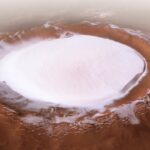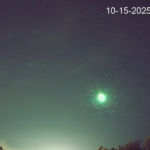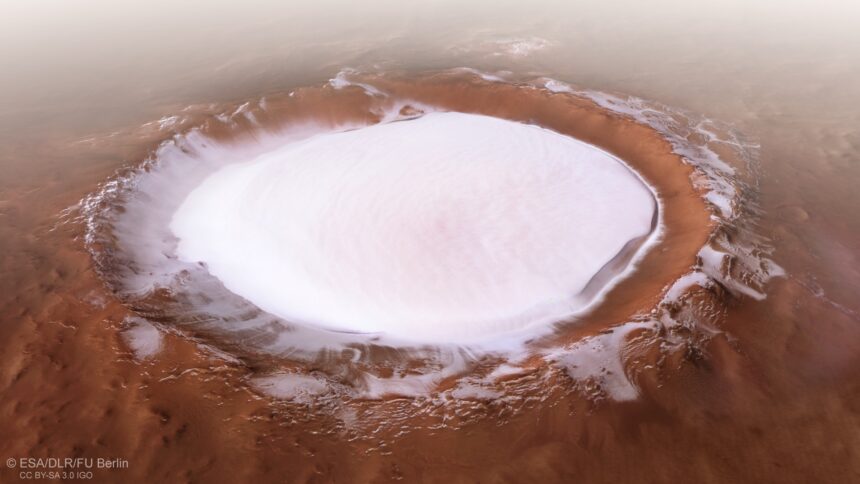If life ever existed on Mars, traces of it may still be preserved — not in ancient rocks, but in the planet’s ice. A new study from NASA and Penn State University suggests that biomolecules such as amino acids could survive for tens of millions of years when trapped in Martian-like ice, offering new hope for future missions searching for signs of past life.
The study, published in Astrobiology, found that ice could act like a natural deep-freeze, shielding fragile biological compounds from harsh radiation and oxidation on the Red Planet’s surface.
In lab experiments, researchers simulated Mars-like conditions to study how long biological material might survive. They froze samples of Escherichia coli — a common Earth bacterium — in two environments: pure water ice, and a mixture of water combined with typical Martian soil materials like silicates and clays.
The samples were then chilled to around –51°C, roughly the average temperature in Mars’s mid-latitudes, and bombarded with radiation similar to what the planet’s surface receives over millions of years. The results were extrapolated to simulate time spans up to 50 million years.
The researchers found that in pure ice, more than 10% of the original amino acids remained intact after the equivalent of 50 million years. But in the ice mixed with soil, the same molecules broke down up to ten times faster.
When tested under even colder temperatures, similar to those on icy moons like Europa (–196 °C) and Enceladus, the rate of deterioration slowed further, whereas relatively higher temperatures significantly accelerated biomolecule degradation, showing how extremely low temperatures help preserve fragile molecules over millions of years.
This difference, researchers say, is because in pure ice, destructive free radicals become immobilized, slowing chemical reactions. In ice that contains minerals and thin films of water, those radicals can move freely and destroy organic material more easily.
“Fifty million years is far greater than the expected age for some current surface ice deposits on Mars, which are often less than two million years old, meaning any organic life present within the ice would be preserved,” said Christopher House, co-author of the study and professor of geosciences, “That means if there are bacteria near the surface of Mars, future missions can find it.”
According to the researchers, locations with pure ice and ice-dominated permafrost should be a top priority for upcoming missions aiming to detect recent biological material.
This also matters for instrument design. Missions such as ESA’s ExoMars rover concept or future sample-return plans may need to target subsurface ice rather than dusty soils to maximize their chances of finding preserved molecules.
Story Source: Pavlov et al. (2025), published in Astrobiology. Read the study here.







